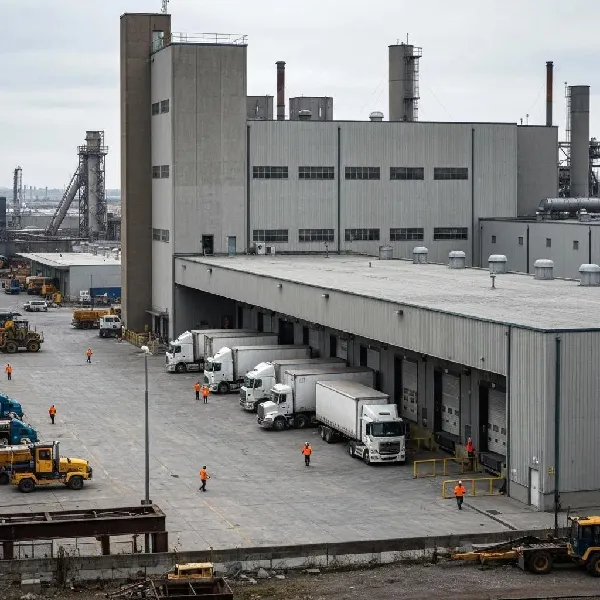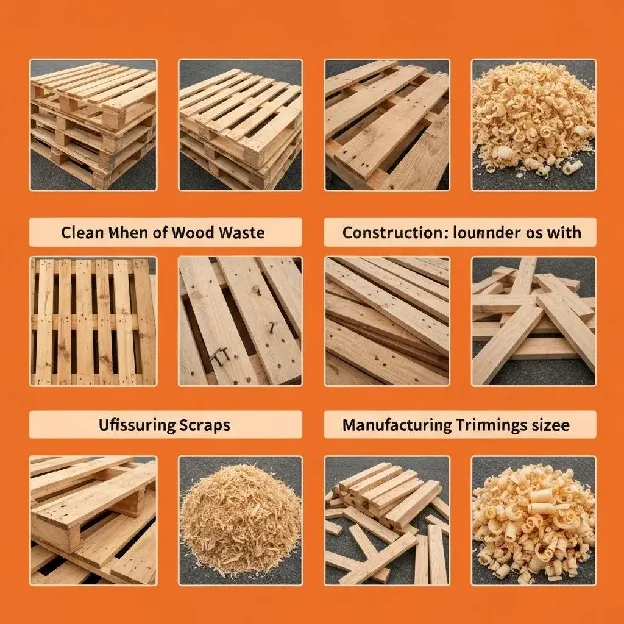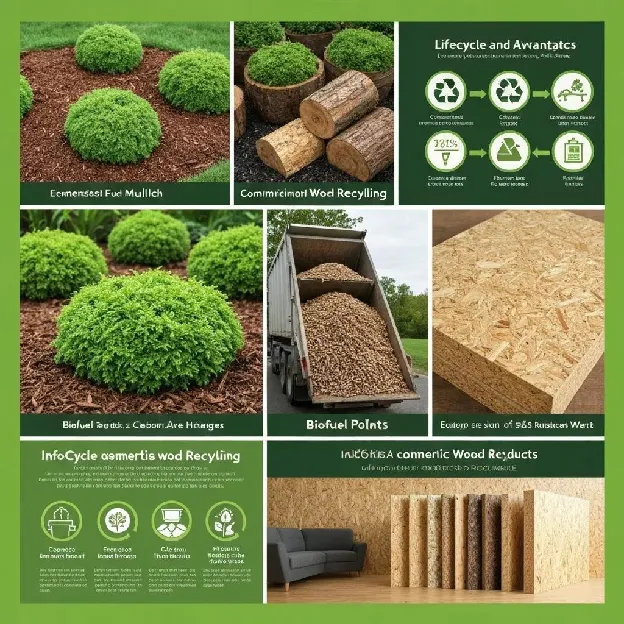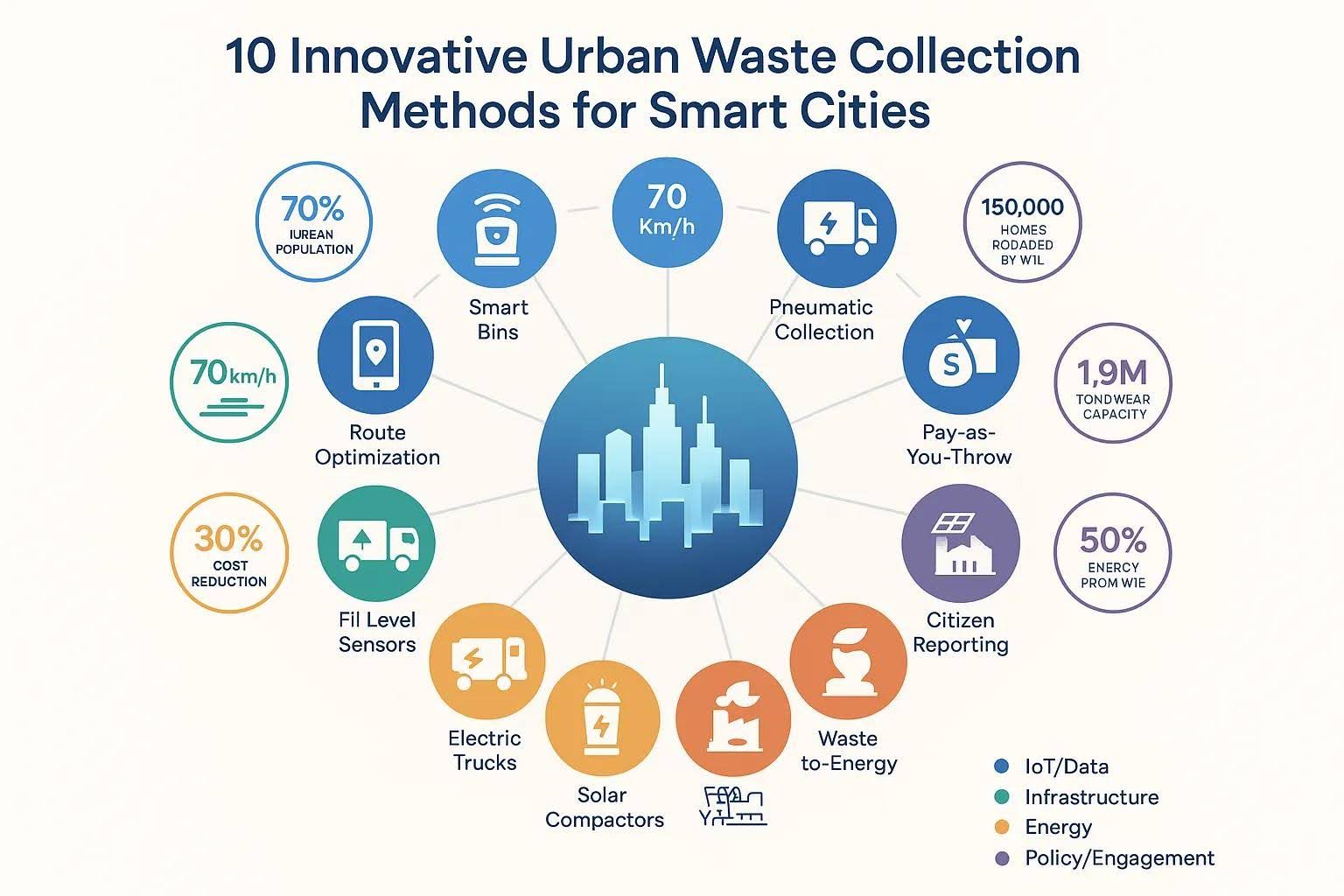

Transforming discarded timber into valuable resources is the essence of commercial wood recycling. It’s your strategic advantage for slashing landfill expenses and significantly boosting your sustainability efforts. By expertly categorizing wood debris, implementing smart dumpster rental logistics, and leveraging advanced processing techniques, your business can enhance efficiency, elevate its environmental profile, and unlock substantial cost savings. This guide explores the common types of wood waste businesses encounter, how National Waste’s dumpster rental service revolutionizes collection, the comprehensive recycling journey, the distinct advantages for multi-location operations, specialized handling for treated and palletized wood, and why National Waste is the leading partner across North America.
What Are the Main Categories of Commercial Wood Waste Businesses Need to Manage?

Commercial wood waste encompasses a broad spectrum of timber materials originating from construction, manufacturing, and distribution industries. Precise classification of each type is essential for compliant disposal and maximizing recycling potential. Understanding these categories—from pristine pallets to chemically treated lumber—empowers your organization to select the most effective collection methods, minimize environmental impact, and reduce disposal fees .
What Types of Wood Waste Are Commonly Found in Commercial and Industrial Settings?
- Lumber scraps from construction and demolition projects, including renovations and new builds
- Wooden pallets and skids crucial for storage and shipping operations
- Manufacturing offcuts and scrap materials from millwork, cabinetry, and panel production
- Wooden crates, packing blocks, and shipping containers
- Distinguishing between untreated, clean wood and composite materials like MDF and particleboard
These materials vary significantly in volume and contamination levels. Identifying them upfront improves sorting accuracy and streamlines the recycling process. Proper classification of pallets, lumber, and manufacturing scraps directly informs the selection of appropriately sized dumpsters for efficient collection .
How Does Treated Wood Waste Differ from Untreated Wood in the Recycling Process?
Treated wood contains chemical preservatives designed to resist decay, but these very chemicals complicate standard recycling efforts due to potential environmental risks. While untreated wood can be readily chipped, ground, and repurposed into mulch or biomass, treated wood requires specialized processing or disposal methods to prevent the leaching of harmful substances into soil and water systems.
| Wood Type | Recycling Pathway | Key Consideration |
|---|---|---|
| Untreated Lumber | Chipping → Mulch/Biomass Production | Maximizes material recovery and potential revenue generation |
| Treated Wood | Controlled Incineration or Specialized Reuse Applications | Requires adherence to EPA-compliant processing protocols |
| Particleboard/MDF | Limited Recycling Opportunities | Potential release of formaldehyde binders during processing |
Differentiating treated from untreated wood at the point of collection is vital for regulatory compliance and safeguarding downstream recycling facilities, paving the way for cost-effective recycling of clean wood streams.
What Are the Environmental and Economic Impacts of Wood Waste for Businesses?
Disposing of wood waste increases operational expenses through landfill tipping fees and contributes to greenhouse gas emissions as timber decomposes. Conversely, recycling wood significantly cuts disposal costs—often by up to 50 percent—and diverts valuable material from landfills, thereby conserving precious forestry resources and reducing your company’s carbon footprint. Identifying your waste streams and implementing robust recycling programs directly translates into optimized dumpster rental strategies for maximum diversion and savings.
Advancing Responsible Resource Management: An Examination of Sustainable vs. Unsustainable Wood Waste Reuse
This in-depth review explores the ecological, financial, and social sustainability dimensions of wood waste reuse. It highlights the substantial potential for reducing greenhouse gas emissions through pathways like renewable energy generation and the creation of construction materials, while also acknowledging the complexities associated with toxic preservatives found in certain wood waste streams.
This research strongly supports our discussion on the environmental and economic advantages of commercial wood recycling, including greenhouse gas reduction and resource conservation.
How Does National Waste’s Dumpster Rental Service Enhance Wood Waste Collection?
National Waste’s dumpster rental service utilizes innovative logistics and dedicated container solutions to elevate timber debris management, empowering businesses to scale operations across hundreds of locations without interruption. By providing precisely sized bins, flexible pickup schedules, and centralized coordination, our service enhances collection reliability and significantly reduces administrative burdens .
What Dumpster Sizes and Types Are Available for Commercial Wood Debris?
Selecting the optimal container is key to streamlining collection and maximizing transport cost-efficiency. National Waste offers a comprehensive range:
- 20-yard roll-off bins, ideal for lighter wood debris and smaller-scale renovations
- 30-yard bins, designed for moderate volumes of pallets and manufacturing scraps
- 40-yard bins, perfect for substantial construction and demolition projects
- Specialized, enclosed containers engineered for sensitive treated wood, ensuring complete containment and preventing contamination
Choosing from these options ensures your business only pays for the space it needs and simplifies scheduling across multiple sites. Proper bin selection directly boosts pickup efficiency and enhances downstream recycling yields .
How Does Flexible Scheduling Improve Wood Waste Collection Efficiency?
Our flexible scheduling system allows for dynamic adjustments to pickup frequency, accommodating project timelines, seasonal demands, and inventory cycles. By coordinating weekly, bi-weekly, or on-demand services, companies effectively minimize overflow risks and eliminate the need for costly emergency hauls. This adaptability supports just-in-time collection, maintains safe and clear worksites, and seamlessly aligns recycling efforts with your core production workflows .
How Does Dumpster Rental Simplify Wood Waste Management?
Dumpster rental integrates container placement, pickup coordination, and recycling facility delivery into a single, cohesive service, eliminating the complexities of managing separate transport providers or negotiating multiple vendor contracts. This unified approach simplifies invoicing, consolidates reporting, and guarantees consistent service quality across all your locations, directly boosting operational efficiency and freeing up facility managers to focus on their primary responsibilities .
What Is the Advanced Commercial Wood Recycling Process at National Waste?
National Waste’s commercial wood recycling process expertly combines cutting-edge sorting technology with strategic partnerships at leading materials recovery facilities, transforming timber debris into high-value end products. This robust workflow significantly enhances resource conservation and champions circular economy principles.
How Is Wood Waste Sorted and Processed for Optimal Recycling?
Upon arrival at our materials recovery facilities , wood waste undergoes a meticulous process:
- Initial screening to meticulously remove contaminants such as nails and adhesives
- Advanced mechanical separation utilizing trommels and air classifiers to sort by density and particle size
- Precision grinding to produce uniform chips, ensuring efficient downstream processing
This systematic approach maximizes material purity and throughput, guaranteeing that each wood category is directed to its most suitable end market without any risk of cross-contamination.
What Are the End Products Derived from Recycled Commercial Wood Waste?
Recycled wood is given a new life through a variety of valuable applications: wood recycling for the construction industry
| End Product | Composition | Value Proposition |
|---|---|---|
| Biomass Fuel Pellets | Precisely processed clean wood chips | Enables large-scale renewable energy generation |
| Mulch and Landscape Bark | Finely shredded untreated wood | Enhances soil health and optimizes moisture retention in landscaping |
| Particleboard and MDF | A blend of mixed wood fibers and binding agents | Provides cost-effective raw materials for manufacturing |
| Animal Bedding | Soft wood shavings | Offers a hygienic and highly absorbent material for livestock |
These diverse end products serve critical roles in the energy, agriculture, manufacturing, and landscaping sectors , generating revenue streams that effectively offset collection and processing expenditures.
How Does Wood Recycling Contribute to Sustainability and Landfill Diversion?
By transforming wood debris into essential products like biomass fuel and mulch, our recycling process diverts substantial tonnage from landfills, significantly reducing methane emissions and preserving vital natural forests. Every ton of recycled wood effectively replaces an equivalent volume of virgin timber, bolstering your corporate sustainability reports and ESG targets. Increased diversion rates directly translate into a lower environmental impact while demonstrating responsible stewardship to all stakeholders.
What Are the Key Benefits of Commercial Wood Recycling for North American Businesses?

Commercial wood recycling delivers tangible advantages in cost control, environmental performance, and operational efficiency, making it an indispensable element of modern waste management strategies, particularly for multi-site enterprises.
How Can Businesses Achieve Significant Cost Savings and ROI Through Wood Recycling?
Recycling wood offers a dual benefit: it dramatically reduces landfill tipping fees and generates revenue from the sale of end products: wood recycling for the construction industry
- Achieve up to a 50% reduction in disposal expenses by diverting clean wood streams
- Generate revenue ranging from $10–$30 per ton through biomass and mulch contracts
- Benefit from streamlined billing that consolidates all waste costs under a single, reliable provider
This comparative cost analysis vividly illustrates the savings :
| Service Element | Traditional Disposal Cost | Recycling Revenue/Savings |
|---|---|---|
| Landfill Tipping Fee per Ton | $80–$120 | – |
| Biomass Fuel Sales Revenue per Ton | – | $20–$30 |
| Net Cost After Recycling Implementation | $40–$90 | Achieve Savings of $30–$60 per ton |
These figures clearly demonstrate the direct ROI achievable through commercial wood recycling, reinforcing the compelling financial case for dedicated dumpster rental programs.
How Does Wood Recycling Enhance Corporate Sustainability and ESG Objectives?
Recycled wood metrics provide concrete data for sustainability reporting, showcasing:
- Significant landfill diversion rates that contribute directly to zero-waste objectives
- Measurable carbon footprint reduction achieved through the replacement of fossil fuels with renewable energy sources
- Enhanced resource conservation that aligns perfectly with circular economy principles
Highlighting these achievements not only elevates your brand reputation and attracts environmentally conscious clients but also satisfies investor demands for transparent and robust ESG performance .
How Does Consolidated Waste Management Improve Operations Across Multiple Locations?
A centralized waste management solution simplifies logistics for businesses operating anywhere from 50 to 5,000 sites across North America by providing: best practices for waste management in construction .
- Single-point coordination for all dumpster deliveries and pickups
- A unified platform for billing and comprehensive reporting across all waste streams
- Standardized service level agreements that guarantee consistent, high-quality performance
Consolidated waste management drastically reduces administrative overhead, eliminates the inefficiencies of vendor fragmentation, and delivers predictable cost structures, allowing executives to focus on strategic growth initiatives rather than the intricacies of waste management .
How Does National Waste Address Specialized Wood Waste Challenges?
National Waste offers unparalleled expertise and robust infrastructure to expertly manage complex timber streams—including treated wood, construction and demolition residues, and pallet recycling—ensuring full compliance and maximizing material recovery .
What Are the Governing Regulations and Best Practices for Treated Wood Waste Disposal?
The disposal of treated wood is strictly governed by federal and state regulations that classify certain preservatives as hazardous. Our best practices ensure full compliance:
- Meticulous segregation of treated lumber from clean wood streams directly on-site
- Transport of treated wood batches in sealed, secure containers to EPA-licensed processing facilities
- Comprehensive documentation of chain-of-custody and disposal manifests for seamless regulatory audits
These rigorous procedures effectively prevent chemical leaching, uphold environmental safeguards, and ensure legal adherence across all relevant jurisdictions .
Navigating Regulations and Disposal Protocols for Treated Wood
Treated wood is classified by the U.S. Environmental Protection Agency (EPA) as a treated article, with specific chemicals used in its treatment registered as pesticides. While federal law does not categorize treated wood as hazardous waste, individual state and local regulations may impose more stringent disposal requirements, often prohibiting burning due to the potential release of toxic chemicals.
This authoritative information directly informs our section on the specialized handling and regulatory compliance essential for treated wood waste disposal.
How Are Large-Scale Construction and Demolition Wood Waste Projects Managed?
For extensive C&D projects, National Waste deploys multiple container placements, meticulously coordinated pickup schedules, and proactive on-site contamination management strategies to efficiently handle volumes potentially exceeding hundreds of tons. Real-time volume tracking and periodic site assessments are employed to continuously improve diversion rates and minimize project delays, ensuring seamless integration with general contractor timelines.
What Programs Are Available for Pallet Recycling and Other Specialized Wood Waste Streams?
National Waste’s comprehensive pallet recycling initiatives include:
- Repair and Reuse Programs : Expertly salvaging intact pallets for professional refurbishment and redeployment
- Pallet Grinding Services : Efficiently converting damaged or obsolete pallets into high-quality mulch
- Buy-Back Agreements : Strategic partnerships with suppliers to facilitate the return of pallets for closed-loop reuse systems
These specialized offerings actively support circular supply chains and unlock additional value from materials that might otherwise be considered low-grade waste.
Landmark Study Reveals 95% of Wooden Pallets Are Recycled, Signaling Major Strides in Landfill Avoidance
Groundbreaking research indicates that an impressive 95% of wooden pallets are successfully recycled, dramatically reducing the volume destined for landfills. This exceptional recycling rate, achieved through a combination of repair, reuse, and conversion into products like mulch or biofuel, signifies substantial progress in waste management and landfill diversion compared to previous decades.
This pivotal study provides verifiable statistics and essential context for our article’s claims regarding the effectiveness and significant environmental impact of pallet recycling programs.
Why Should Businesses Partner with National Waste for Their Commercial Wood Recycling Needs?
Collaborating with National Waste provides enterprises with a proven, results-driven framework, an expansive nationwide network, and cutting-edge technology solutions that enhance sustainability, drive significant cost efficiencies, and ensure unwavering operational consistency across North America.
What Unique Advantages Does National Waste Offer Across North America?
National Waste distinguishes itself by providing: best practices for waste management
- An extensive coast-to-coast network of state-of-the-art recycling and processing facilities
- Advanced logistics software offering real-time tracking of container usage and service performance
- Dedicated account management teams providing expert multi-site coordination
- Customizable reporting tools meticulously aligned with your corporate sustainability dashboards
This powerful combination of infrastructure, technology, and dedicated support guarantees reliable service and measurable performance improvements for even the largest-scale operations .
How Do Customer Success Stories Illustrate National Waste’s Transformative Impact?
Leading retailers, prominent construction firms, and innovative manufacturers have partnered with National Waste to achieve remarkable results, including:
- A reduction in wood waste volumes by an average of 30% within the initial year of service
- Annual savings exceeding $100,000 in disposal costs at the enterprise level
- Successful attainment of zero-waste certifications and strengthened ESG disclosures
These compelling case results underscore the profound, measurable impact that a comprehensive, strategically implemented wood recycling program can deliver.
How Can Businesses Initiate Their Journey with National Waste’s Wood Recycling Solutions?
Engaging with National Waste is a straightforward process that begins with a complimentary, no-obligation site assessment. This initial step allows us to accurately quantify your wood waste volumes and develop a customized dumpster rental plan tailored to your specific needs. Upon your approval, specialized containers are promptly deployed, efficient pickup schedules are established, and real-time reporting dashboards are activated—empowering your business to enhance sustainability metrics and reduce costs from day one.
The strategic integration of precise waste classification, bespoke dumpster rental logistics, advanced processing methodologies, and consolidated management empowers organizations to transform commercial wood waste into a potent catalyst for savings and exemplary environmental stewardship. Businesses that embrace these revolutionary commercial wood recycling solutions position themselves as forward-thinking industry leaders, deeply committed to operational efficiency, regulatory compliance, and a demonstrably greener future .



